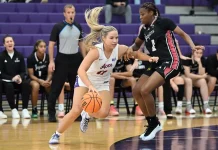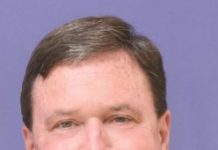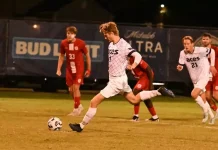It was Billy Bolin’s “No. 1 priority.â€
Back in 2014, the Evansville police chief pushed hard for the City Council to fund ShotSpotter — sensor technology that can detect gunshots and alert police within minutes.
He sought $250,000 to install listening devices in crime-heavy neighborhoods. Problem was, he ran into a severely cash-conscious City Council that was looking to slash millions from the next budget.
The money ended up getting left out. And next year, with the Council nursing the same concerns, the effort was abandoned.
READ MORE:
Now – after one of the bloodiest runs in the city’s history, rife with gun homicides – the city is eyeing ShotSpotter again.
“It is (on the wish list). It certainly will be considered,†Mayor Lloyd Winnecke said during a Wednesday press conference to address the recent violence. “Like we do with any new technology, we will do a cost-benefit analysis and see if it warrants it. It may well be presented back to Council.
“We like that technology. We liked it when we presented it several years ago. (But) it is an expensive proposition, and I’m not sure the price has come down or not.â€
They may have better luck at council this time. Second Ward councilor Missy Mosby voiced her support in the past, and at-large councilman Jonathan Weaver advocated for ShotSpotter on social media this week.
But installing technology like that is a big decision. And like the mayor said, it’s pricey, too – especially for a city that tightropes over a chasm of debt every year.
So – is it worth it?
According to examples in at least two high-profile cities, maybe not.
Forbes Magazine dove into the data after San Francisco bought ShotSpotter’s services. Between January 2013 and May 2014, police responded to 4,385 alerts. Of those, 1,412 were deemed unfounded. And all that work resulted in only four arrests.
Also consider the attempted murder case against Michael Reed. He is accused of peppering a round of shots into a full car on the night of Aug. 13, 2016. According to reports from the San Francisco Examiner, Reed says he fired in self-defense, but ShotSpotter recordings claim most of the shots were blasted by Reed, with the others coming courtesy of a co-defendant – not some shadowy attacker.
Here’s the thing, though. ShotSpotter also claimed the shots were fired a block away from where police eventually pinpointed Reed. That fuels disagreement over how accurate the technology actually is.
ShotSpotter claims at least 80 percent accuracy. But Paul Greene, an analyst with ShotSpotter who testified as an expert witness in the Reed trial, said that number was largely made up for the sake of marketing.
“Our guarantee was put together by our sales and marketing department, not our engineers,†Greene said in court. “We need to give (customers) a number. We have to tell them something. … The dot on the map is simply a starting point.â€
The company now claims accuracy is even higher than 80 percent. So do police from San Francisco and other cities. But no one knows for sure.
Then there’s Charlotte. For $160,000 a year, the North Carolina city installed ShotSpotter to aid the police state that surrounded the 2012 Democratic National Convention.
But by the next presidential election, Charlotte was ready to move on. They nixed their contract that February.
“The system operated as designed,†the city council manager’s office stated in a memo. “However, based on its experience with the system, CMPD feels the return on investment was not high enough to justify a renewal.â€
Those are just two examples. There are other cities that love ShotSpotter – and others that don’t.
South Bend falls into the former. Speaking to the Courier & Press’ Zach Evans in 2014, South Bend police chief Ron Teachman stumped for ShotSpotter after using it in his former job in Massachusetts.
The city paid for it by leaving some department jobs open and forgoing promotions. Or, as Teachman put it, “eating Ramen Noodles and mac and cheese, metaphorically.â€
The department was pretty unhappy at first, but Teachman said folks came around after the technology greatly improved efficiency and helped authorities properly gauge the huge gunfire problem roiling through the city.
San Francisco authorities claim ShotSpotter has helped curb gunfire there, too. But there’s very little proof that ShotSpotter actually prevents, or even slows down, crime.
Take South Bend. Since buying ShotSpotter in 2014, homicide numbers have remained fairly stagnant. The city saw 22 criminal homicides last year – up from 19 in 2016. That amounts to 21 homicides per 100,00




